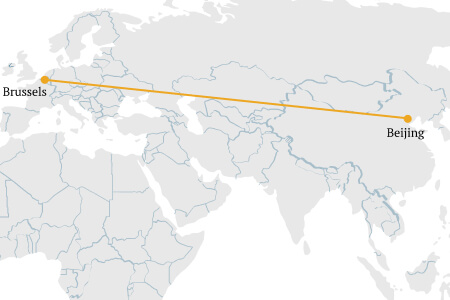Challenge

Solutia
The European Commission initiated anti-dumping proceedings concerning imports of polyvinyl alcohol (PVA) originating from China. The investigation on the dumped PVA was worth more than $33 million. Solutia, a U.S. Fortune 500 firm and a Monsanto spin off, was one of the parties concerned by this investigation. Solutia relied heavily on PVA to produce polyvinyl butyral (PVB), a material used in glass, construction and auto industries. With only 5-months’ notice, Solutia sought Alber & Geiger’s help to avoid import duties on PVA.
Strategy
Meaningful results in an expeditious manner.
Nanette Lockwood- Director Government Affairs, Solutia Inc
Alber & Geiger produced a narrative that included an understanding of the Chinese economy and the PVA market in China. Our message was strongly embedded in the European Commission’s approach to trade and competition law, while taking into account the global political consensus on Chinese PVA dumping. More concretely, we put forward arguments that the dumping was a natural consequence of China’s macro-economic situation and production pressures. Our team demonstrated that other market factors had contributed to the EU economic injury. We argued that the European Commission had not shown a causal link between the detriments suffered by the EU market and dumped imports from China. Moreover, our message cast doubt on the way the European Commission had defined the market of PVA in light of the broader range PVA uses.
Results
 Alber & Geiger’s lobbying activity led to the European Commission revising its preliminary duties decision on PVA imports. As we had argued, the European Commission concluded that there was no evidence that would link dumping and injury. The tariffs were lifted. Solutia’s profitability and position on the global market remained intact.
Alber & Geiger’s lobbying activity led to the European Commission revising its preliminary duties decision on PVA imports. As we had argued, the European Commission concluded that there was no evidence that would link dumping and injury. The tariffs were lifted. Solutia’s profitability and position on the global market remained intact.

 Alber & Geiger’s lobbying activity led to the European Commission revising its preliminary duties decision on PVA imports. As we had argued, the European Commission concluded that there was no evidence that would link dumping and injury. The tariffs were lifted. Solutia’s profitability and position on the global market remained intact.
Alber & Geiger’s lobbying activity led to the European Commission revising its preliminary duties decision on PVA imports. As we had argued, the European Commission concluded that there was no evidence that would link dumping and injury. The tariffs were lifted. Solutia’s profitability and position on the global market remained intact.